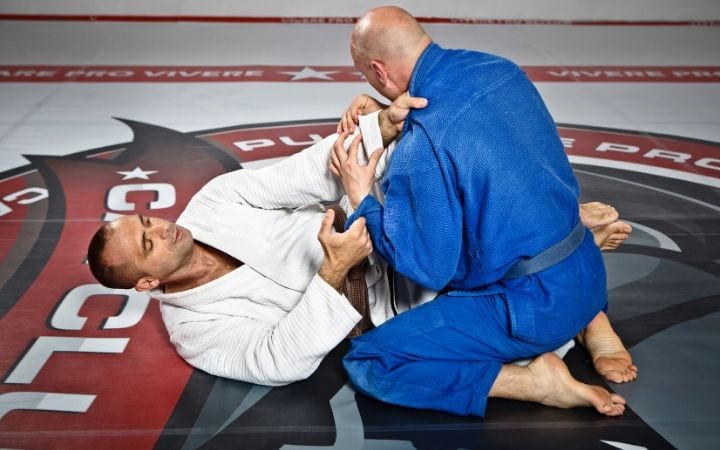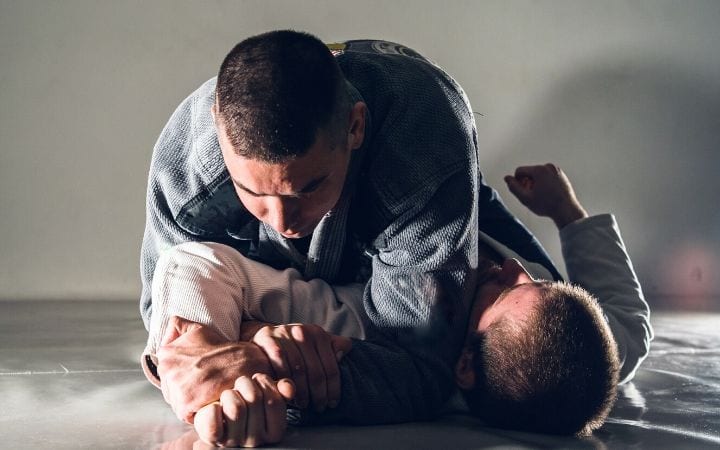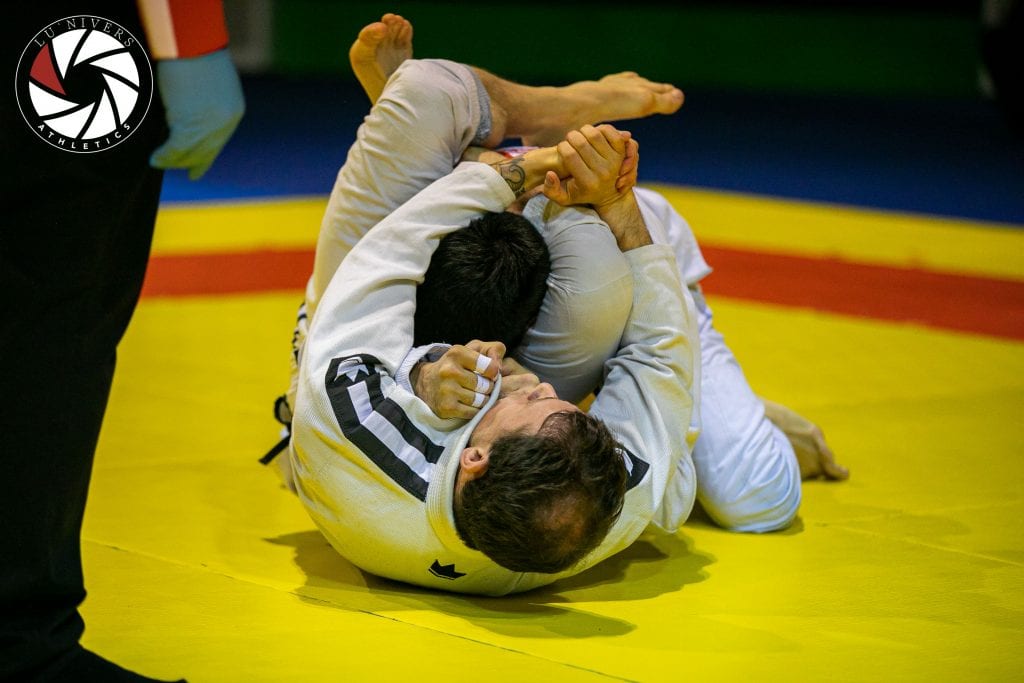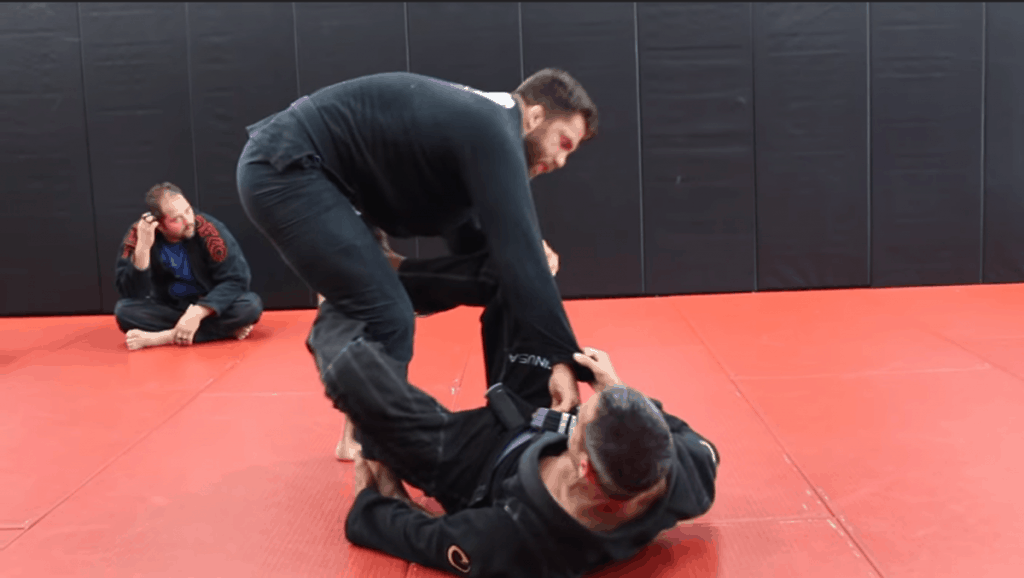Learning a single skill can be an intimidating feat. However, learning a martial art like Jiu Jitsu can be a whole other matter. Each technique can feel like a separate skill that requires its own attention and practice.
Fortunately, there are several foundational techniques that you can use as starting points. All other techniques branch off of these first maneuvers. White belts should start slow and work to build a good foundation by learning these 7 basic techniques!

Warm-Ups
The beginning of your Jiu Jitsu journey won’t actually be a technique performed on a resisting opponent – and in fact may not even involve a compliant partner! You must begin by learning and understanding Jiu Jitsu mechanics and letting your body adjust to the unusual movements the sport demands.
Many of these movements will mimic Jiu Jitsu techniques like submissions or escapes. By learning these motions first, you will have a clearer understanding of the techniques that rely on them.
Shrimp
The shrimp may very well be the first Jiu Jitsu technique you learn. The movement works as a warm-up exercise before class but ultimately translates into a foundational escape maneuver.
The shrimp is performed while you are laying on your back or side. Typically when shrimping you are maneuvering yourself out from your opponent’s top control.
Plant one foot on the mat, generally the foot on the side you are looking to press out toward; although, you can also use two feet depending on the context.
Once you have a firmly posted foot, press off the mat to shoot your butt out and away from your opponent. At the same time, you should be framing and pushing away from your opponent with your arms.
Repeat this movement down the mat or until you have made enough space away from your opponent to recompose guard.
Triangle Sit-Ups
The motion of a triangle sit-up is fairly simple but teaches several important lessons. This warm-up will be performed from the back. For every rep, you will hoist your hips into the air and make a figure four, or triangle, with your legs.
Try to roll back onto your shoulders as you elevate your hips. This will help you increase the height of your triangle which will help you catch an opponent who is more postured up and thus farther away from you.
This warm-up will teach you hip elevation (important for many submissions), as well as the proper mechanics for the triangle choke entry.
Guard Retention
There are several variations to guard retention drills. However, a simple and effective version has your partner attempt to lightly circle around your guard. As they move, try to stay connected to their body with at least your feet.
Move with each other, with the guard passer determining the pace. As you become comfortable with the pace, increase the speed and intensity of the passing.
Submissions
Nobody says it out loud, but when we’re in class, we all want to skip the other techniques and get right to the submissions.
They’re fun, flashy, and are the definitive end to any match. However, just because they can be devastating weapons does not mean they lack finesse or nuance. Here are a couple foundational submissions that will be faithful weapons throughout your Jiu Jitsu journey.

Kimura
The Kimura is arguably the most versatile submission in Jiu Jitsu. Not only because of its ease of application but also because once it is applied you can use it as an anchor point to follow your opponent no matter where they transition too.
Typically, the basic Kimura is performed from the closed guard. You will isolate one of your partner’s arms by first grabbing their wrist with your same side hand. Move up to post onto your elbow for elevation.
Next, with your free hand, reach over your partner’s shoulder and loop under their arm, where you will latch onto the wrist of your first hand.
You will notice that you’ve created a figure four grip. This is a powerful two-on-one grip that lends the Kimura its technical prowess. To finish the submission, fall to your back at an angle and while maintaining the 90-degree angle of your partner’s arm. Press the arm toward the back of their head until they tap.
The deeper the angle your body creates, the more power you will have in the Kimura. To test your angle try the “equals sign/plus sign rule.” Consider that when in closed guard you are parallel with your partner, or that you are essentially in the shape of an equals sign.
Angle your body toward the Kimura until you are perpendicular to your partner, essentially creating a plus sign.
Triangle Choke
The triangle choke, like the arm bar, is a technique that you’ll occasionally see executed in your favorite action movies. It is a foundational submission that can be learned in the early stages of your journey but will constantly be refined as you progress.
The triangle is a submission in which the setup is often the most difficult part. The submission itself, when achieved, is relatively easy to finish. However, the setup can be made easier if you break the move down to its most essential parts.
Ask yourself: what do I need for a triangle? The answer? All you need for a triangle is your partner’s head and arm.

Image Credit to www.luniversproduction.com/Once you realize this you will recognize how prevalent the triangle is. At the basic levels, your partner will probably even expose themselves to a triangle as they attempt a basic guard pass, leaving one arm vulnerable.
Once you see the opportunity, elevate your hips and catch your partner’s head and arm between your legs. Hold this position until you feel ready to transition, or until you feel their initial defenses have subsided.
Now, elevate your hips again to bring their exposed arm across your body, which will also press it against their neck. Grab your shin (not your foot) on the leg pointing opposite of their arm.
Place your lower foot on your partner’s hip and push off of it, while pulling your shin toward you and onto the back of their neck.
As you are now squarely on the back of their neck, complete a figure four lock with your legs. This should be enough to finish the submission. However, for added pressure, pull down on their head with both hands while elevating your hips to tighten the choke.

Sweeps
A sweep can radically change the flow of any Jiu Jitsu match, bringing you from a defensive posture on your back to an aggressive attacking position. The following sweeps are relatively basic in their application and should be a part of everyone’s arsenal.
Tricep Sweep
The tricep sweep has many names including: sit-up sweep, hip bump sweep, and kimura sweep. Each of these names describes a different aspect of the technique.
The sweep will be performed from the closed guard. You can establish momentum leading into the sweep by rocking your body back and forth, and posting onto your elbow. Like the Kimura, you will loop your arm around your partner’s shoulder and latch onto their bicep.
Grip your partner’s arm closely to your body as you open your guard and bump your hips in the direction of the isolated arm.
Pendulum Sweep
For the pendulum sweep, you will want to implement the “equal sign/plus sign” principle. You can achieve a deep angle by underhooking your opponent’s leg. Swim your arm deep enough for the bend in your arm to meet the bend in their leg.
You will also want to grip your partner’s far side arm as this will be the direction you are sweeping them. If you fail to trap this arm then they’ll be able to use it to post, nullifying your sweep attempt.
Open your guard and make a windmill motion with your legs in the direction of their trapped arm. Press up with the hooking arm against your partner’s leg. This sweep will take you straight into the mount.
Summary
Jiu Jitsu can seem complicated at first, but by learning the fundamental tactics and techniques you can quickly build a competent foundation.
Do your best to learn the basic warm-ups, sweeps, submissions, and positions that will give you a well-rounded Jiu Jitsu game for years to come.
